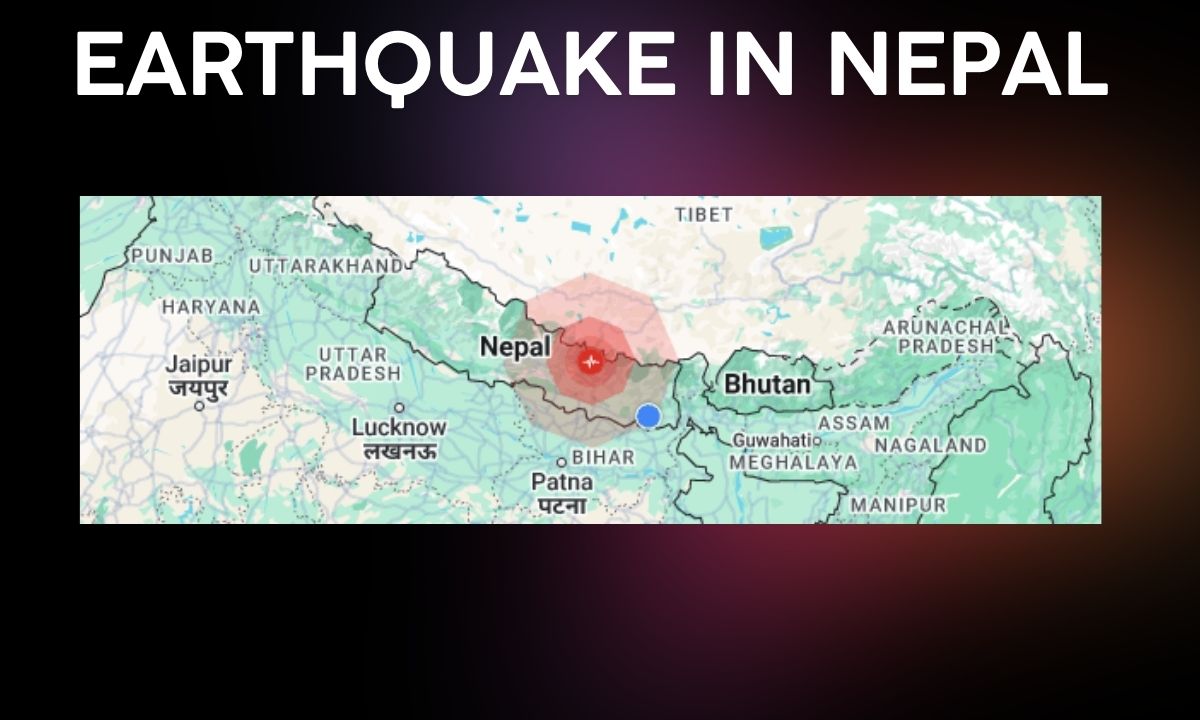In the early hours of Friday, February 28, 2025, at precisely 2:51 AM local time, a significant seismic event rattled the serene landscapes of Nepal. A 5.1 magnitude earthquake struck just 2 kilometers from the village of Listikot in the Sindhupalchok district, sending tremors that reverberated across neighboring countries, including India and China.
Residents in the vicinity of the epicenter were abruptly awakened as the ground beneath them convulsed, causing household items to topple and walls to creak ominously. The sudden jolt disrupted the tranquility of the night, instilling a sense of fear and uncertainty among the populace. In the immediate aftermath, people vacated their homes, congregating in open spaces to seek safety and solace amidst the unfolding chaos.
The National Earthquake Monitoring and Research Center (NEMRC) in Kathmandu promptly recorded the seismic activity, pinpointing the epicenter near Listikot. This region, characterized by its rugged terrain and picturesque landscapes, has historically been susceptible to seismic disturbances due to its positioning along active tectonic plate boundaries.
As dawn approached, preliminary assessments began to surface. Local authorities, in collaboration with disaster response teams, initiated surveys to evaluate the extent of the damage. Initial reports indicated structural impairments to residential buildings, with some older constructions suffering significant cracks and potential instability. Fortunately, there were no immediate reports of casualties; however, the full scope of the impact remained under meticulous evaluation as communication lines were reestablished and more remote areas became accessible.
The tremors were not confined to Nepal alone. In the neighboring Indian states bordering Nepal, residents reported feeling the quake’s vibrations, leading to momentary panic and the evacuation of buildings as a precautionary measure. Similarly, certain regions in China experienced mild tremors, though no damage was reported. The transnational reach of the earthquake underscores the interconnected nature of seismic events in this geologically active zone.
Seismologists have long studied the Himalayan region, recognizing it as one of the most seismically active areas globally. The collision of the Indian and Eurasian tectonic plates gives rise to frequent earthquakes, some of which have had devastating consequences in the past. The 2015 Gorkha earthquake, for instance, resulted in significant loss of life and property, serving as a somber reminder of the potential dangers inherent in this region.
In the wake of the recent tremor, experts have reiterated the importance of preparedness and resilience. Dr. Lok Bijaya Adhikari, a senior seismologist at NEMRC, emphasized that while the 5.1 magnitude quake is considered moderate, it serves as a crucial reminder of the region’s vulnerability. “Frequent seismic activities highlight the need for continuous vigilance and the implementation of robust building codes to mitigate potential damages,” Dr. Adhikari stated.
The government of Nepal has been proactive in its approach to disaster management, especially following the lessons learned from previous seismic events. Initiatives have been undertaken to educate the public on earthquake preparedness, including regular drills and the dissemination of information on safety protocols. Moreover, efforts to retrofit older buildings and enforce stringent construction standards for new developments are ongoing, aiming to enhance the structural integrity of edifices across the nation.
In rural areas, where access to resources and information may be limited, community-based programs have been instrumental. Local leaders and volunteers are trained to act as first responders, ensuring that immediate assistance is available in the critical moments following a disaster. These grassroots initiatives foster a sense of communal resilience, empowering residents to take proactive measures in safeguarding their lives and properties.
The recent earthquake also prompted a swift response from international aid organizations and neighboring countries. Expressions of solidarity and offers of assistance poured in, reflecting the collaborative spirit that often emerges in the face of natural calamities. Such support not only aids in immediate relief efforts but also contributes to long-term recovery and reconstruction endeavors.
As the affected communities begin the process of recovery, the psychological impact of the earthquake cannot be overlooked. The suddenness of such events often leaves lasting impressions, with individuals experiencing anxiety and trauma. Mental health professionals advocate for the integration of psychological support into disaster response frameworks, ensuring that emotional well-being is addressed alongside physical reconstruction.
In the broader context, the recent seismic activity has reignited discussions on the importance of early warning systems. Advancements in technology have made it possible to detect preliminary seismic waves, offering crucial seconds of warning before the more destructive waves arrive. Implementing and maintaining such systems require investment and coordination but can significantly reduce casualties and damage during earthquakes.
Furthermore, urban planning plays a pivotal role in mitigating the impact of earthquakes. Designating open spaces for evacuation, ensuring accessible routes for emergency services, and enforcing land-use regulations in high-risk zones are essential components of a comprehensive disaster risk reduction strategy. By integrating these considerations into development plans, cities and towns can enhance their resilience against future seismic events.
Education remains a cornerstone of preparedness. Incorporating earthquake awareness into school curricula equips younger generations with the knowledge and skills to respond effectively during such events. Regular workshops and training sessions for the general public further reinforce a culture of readiness, transforming awareness into actionable steps that can save lives.
As Nepal navigates the aftermath of this recent earthquake, the collective efforts of individuals, communities, government agencies, and international partners converge towards a common goal: building a safer and more resilient nation. While the tremors serve as a stark reminder of the challenges posed by natural forces, they also highlight the indomitable spirit of humanity and our capacity to unite in the face of adversity.
In conclusion, the 5.1 magnitude earthquake near Listikot on February 28, 2025, stands as a testament to the seismic volatility of the Himalayan region. It underscores the imperative for continuous preparedness, robust infrastructure, and collaborative efforts to mitigate the impacts of such natural events.
